Summary: If much of the public is predisposed to defining history as an assembly of facts, part of the reason may stem from how the subject is taught in classroom settings. Our findings indicate that high school and college focus to greater or lesser degrees on factual matters, though respondents nonetheless reported increased interest in the discipline as a result of their experiences. Answers to open-ended questions exposed other areas of success and concern for instruction of the past.
We saw in Section 1 that respondents heavily equated “history” with basic facts. Nevertheless, the public also strongly felt, by a 90 percent to 10 percent split, that history can be learned everywhere, not just in classrooms. While we acknowledge that educational settings are not the sole learning points of the past, it stands to reason that those formal settings do help shape people’s attitudes toward the discipline and the public’s desire to know more about it.
Given a binary choice of whether their high school classrooms emphasized either basic facts or questions about the past, 76 percent of those surveyed selected the former. That split held steady for most demographic subgroups (see the age groups breakdown in Figure 3), but there were exceptions. Only 68 percent of Hispanic respondents reported a primary focus on factual material (Figure 59), while white women exceeded the overall rate with 81 percent (Figure 60). Party identification also saw double-digit differences between Democrats and Republicans (Figure 61).
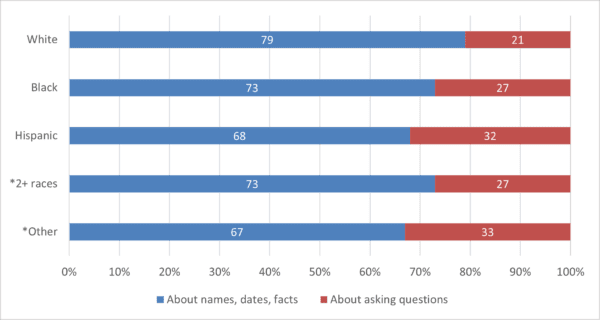 Figure 59: By race/ethnicity: Respondents’ experiences in high school history courses. *Fewer than 100 responses. (V13)
Figure 59: By race/ethnicity: Respondents’ experiences in high school history courses. *Fewer than 100 responses. (V13)
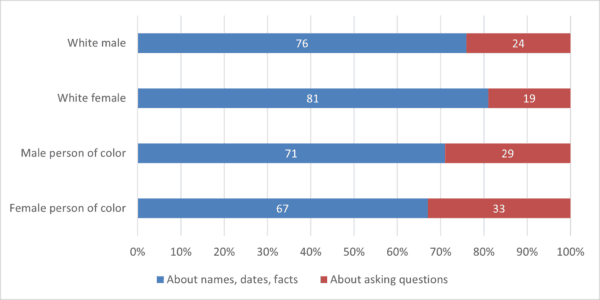 Figure 60: By gender/race/ethnicity: Respondents’ experiences in high school history courses. (V13)
Figure 60: By gender/race/ethnicity: Respondents’ experiences in high school history courses. (V13)
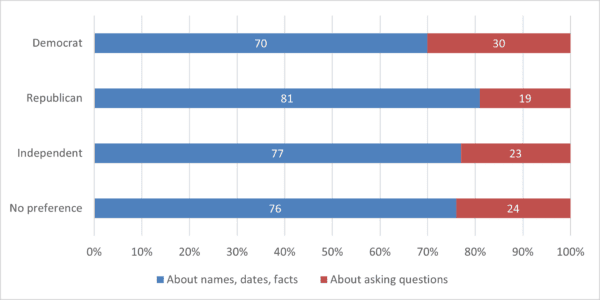 Figure 61: By political party: Respondents’ experiences in high school history courses. (V13)
Figure 61: By political party: Respondents’ experiences in high school history courses. (V13)
This heavy emphasis on factual material in high school did not seem to have an overly dissuasive effect on history learners: 68 percent of respondents said their experiences made them want to know more about the past. As above, there were some subgroup outliers voicing interest higher than that number as a result of high school (Hispanics, 76 percent) or lower (white women, 61 percent). A pedagogical cause and effect thus possibly presents itself: the more a class emphasizes questioning the past, the more interest it sparks in learners. The reverse may be true as well: history courses that focus primarily on factual material provoke greater lack of interest in the subject. Such relationships are corroborated by cross-referencing high school approaches to history with motivation to learn: by a significant ratio of greater than seven-to-one, inquiry-based investigation led to a reported increased desire to learn more about the past (Figure 62). Whether that relationship holds up in actual practice or is more wishful thinking is another matter.
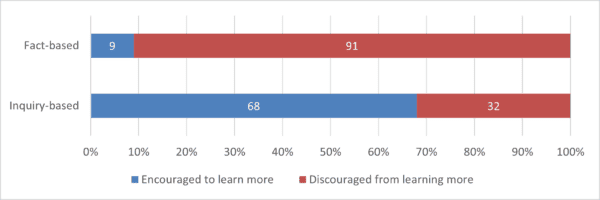 Figure 62: Respondents’ reported motivation to learn more history as function of fact-based versus inquiry-based history courses. (V13 x V14)
Figure 62: Respondents’ reported motivation to learn more history as function of fact-based versus inquiry-based history courses. (V13 x V14)
High school experiences are readily compared with those of college history courses. The latter registered far fewer responses indicating concentration on factual matters (44 percent) and a greater proportion who learned to question the past (56 percent). Still, the 44 percent figure shows that the “coverage” approach to teaching history is alive and well, even at the higher ed level. Other results are ambiguous on this matter. In a sign that the coverage model may be falling out of favor in college, it was the youngest survey cohort that reported the greatest emphasis on asking historical questions in its classes (Figure 63). That must be balanced against the roughly equal proportions of respondents with and without college degrees, who indicated continuity of experiences from high school to university (Figure 64).
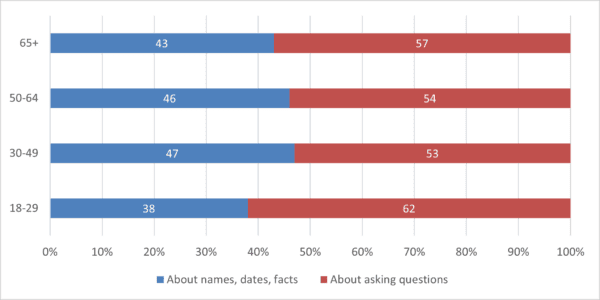 Figure 63: By age group: Respondents’ experiences in college history courses. (V15)
Figure 63: By age group: Respondents’ experiences in college history courses. (V15)
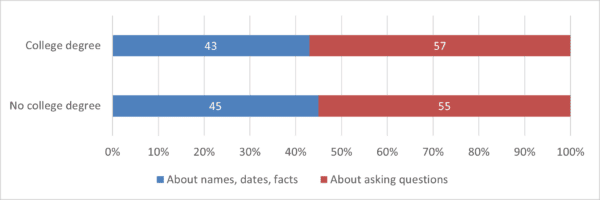 Figure 64: By education level: Respondents’ experiences in college history courses. (V15)
Figure 64: By education level: Respondents’ experiences in college history courses. (V15)
Different college experiences as a function of race and ethnicity (Figure 65) were the inverse of those at the high school level (Figure 59), though sample sizes for people of color with college degrees were too small to draw any firm conclusions. Meanwhile, the centrality of basic facts in college history classes diminished proportionately for all political party groups (Figure 66), relative to the high school results (Figure 61).
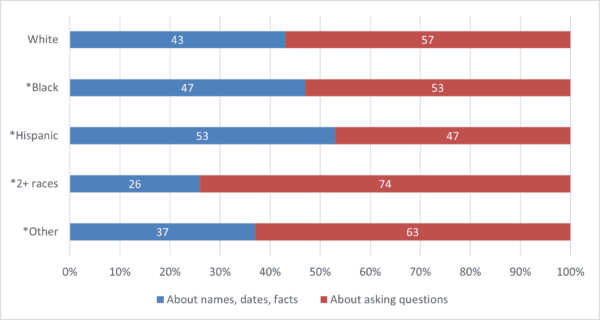 Figure 65: By race/ethnicity: Respondents’ experiences in college history courses. *Fewer than 100 responses. (V15)
Figure 65: By race/ethnicity: Respondents’ experiences in college history courses. *Fewer than 100 responses. (V15)
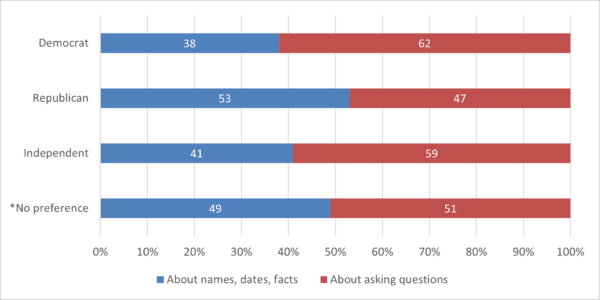 Figure 66: By political party: Respondents’ experiences in college history courses. *Fewer than 100 responses. (V15)
Figure 66: By political party: Respondents’ experiences in college history courses. *Fewer than 100 responses. (V15)
Open-ended survey questions shed much additional light on the formal history education experience. Respondents were asked to provide words or short phrases in three text boxes describing their high school experiences in history classes. Not everyone gave responses (52 percent could not remember their courses well enough, while an additional 6 percent reported not having taken a history/social studies class), let alone in all three boxes. But for the remaining 42 percent, the three opportunities elicited 1,591 answers that were then coded and quantified as follows (see Figure 67).
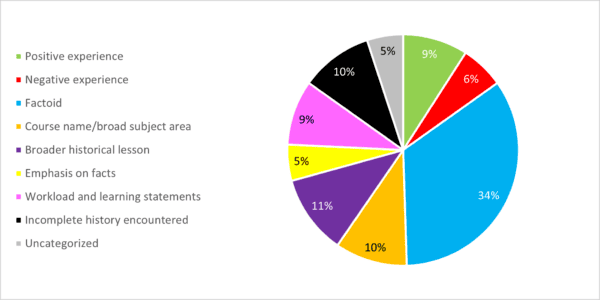 Figure 67: Respondents’ associations made with high school history courses. N = 1,591 (three rounds of responses). (SCH1)
Figure 67: Respondents’ associations made with high school history courses. N = 1,591 (three rounds of responses). (SCH1)
Responses that indicated positive or negative experiences were straightforward. These included words such as “amazing,” “educational,” “enlightening,” “fascinating,” and “interesting,” which accounted for 9 percent of all responses. Negative words and phrases included “boring,” “dry,” “inept,” “not meaningful,” “poorly taught,” and “uninteresting,” and amounted to 6 percent of the total.
The plurality of responses (34 percent) were classified as factoids, where respondents seemed to draw from their wells of basic factual knowledge. These might include dates such as “1492,” persons like “Abraham Lincoln,” events such as “Boston Tea Party,” or even common historical quotes like “Give me liberty or give me death.”
Another category placed responses in what seemed to be either course titles or broad subject areas. These included such answers as “European history,” “freedom,” “government,” and “war,” and accounted for 10 percent of all responses.
Broader history lessons, including well-worn bromides, comprised another grouping, with responses including “empires rise and fall,” “history repeats itself” (and myriad permutations of George Santayana’s famous quote), and even judgments like “capitalism is not just.” Together, these were 11 percent of the total.
Five percent of the answers were indicative of educational experiences that emphasized raw facts—usually in a negative manner, so that this category could be plausibly added to the 6 percent of negative responses described earlier. The present category was comprised of phrases like “cramming information,” “lots of dates,” “memorization,” and “rote learning.”
An additional grouping was based on learning statements and workload estimates. “Document analysis,” “learned about other cultures,” “difficult,” and “lots of reading” (neither of which we viewed as necessarily negative) are some examples, which made up 9 percent of the results.
Ten percent of the responses indicated that the history encountered was incomplete or lacking in some way. Most of these, too, could be interpreted as being at least somewhat negative. Words and phrases included “biased,” “Caucasian-based,” “Eurocentric,” “half-truth,” “limited,” “not enough primary sources,” and “whitewashed.”
A final grouping (5 percent of total) defied any sort of categorization.
The same criteria were used to code and quantify 814 responses on experiences in college-level courses, the results of which are displayed in Figure 68. This time, 88 percent of those who had taken history class at this level weighed in with at least one response.
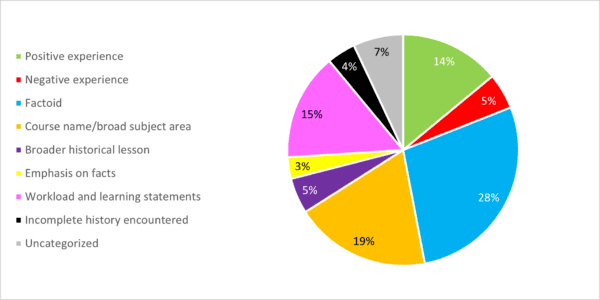 Figure 68: Respondents’ associations made with college history courses. N = 814 (three rounds of responses). (SCH3)
Figure 68: Respondents’ associations made with college history courses. N = 814 (three rounds of responses). (SCH3)
Comparing high school and college-level results from the open-ended responses leads to the following observations. First, college experiences are a bit more positive/less negative than those of high school. These are perhaps unfair comparisons, since college populations are largely self-selected, whereas high school constitutes compulsory education. Still, the differences are not enormous. If responses in the categories of “emphasis on facts” and “incomplete history encountered” are added to the strictly negative classification, as discussed above, then 21 percent of high school responses become negative, compared with 12 percent for college.
While college factoid responses were less common than for high school, factoids were still the plurality response for both levels of instruction. This is consistent with a trend pointed out earlier, where an emphasis on straight facts became less prevalent as history education progressed; yet it also suggests that even higher education settings continue to emphasize factual material more than anything else.
Responses referring to broad subject areas were nearly twice as common at the college level (19 percent) than high school (10 percent). There seem to be two possibilities here. First, such results may indicate relatively more emphasis in college courses on broader concepts than on isolated facts, a possibility that is reinforced by the relative frequencies of factoid responses (28 percent college, 34 percent high school) and factual emphasis (3 percent college, 5 percent high school) at each level. This possibility is further reinforced when considering workload/learning statements for each (15 percent college, 9 percent high school). Second, the college results may simply be an artifact of the greater variety of history courses than are generally available in high schools. Additional surveys or focus groups could help clarify the issue.
Finally, high school responses were more than twice as likely (10 percent) to reference incomplete versions of history than were college reactions (4 percent). Whether this is again a function of the survey cohorts, access to a broader selection of classes at the college level to fill subject matter gaps, or something else awaits further investigation.
Challenges and opportunities: There are many reasons why facts may predominate in history education, ranging from high-stakes exam requirements to ease of assessment to audience expectations. College-level courses struck respondents as more concerned with analyzing the past as opposed to simply knowing it, but the same factors afflicting high school teachers might serve as bottlenecks for professors, too. As seen in other parts of this report, the public indicates that it prefers analysis to memorization, and that it welcomes challenges to presumptions. In theory, those findings give the green light to more ambitious teaching approaches, but only if learners and instructors are willing to accept the complexity, ambiguity, and even discomfort that are part of the bargain.
← Previous section Next section →